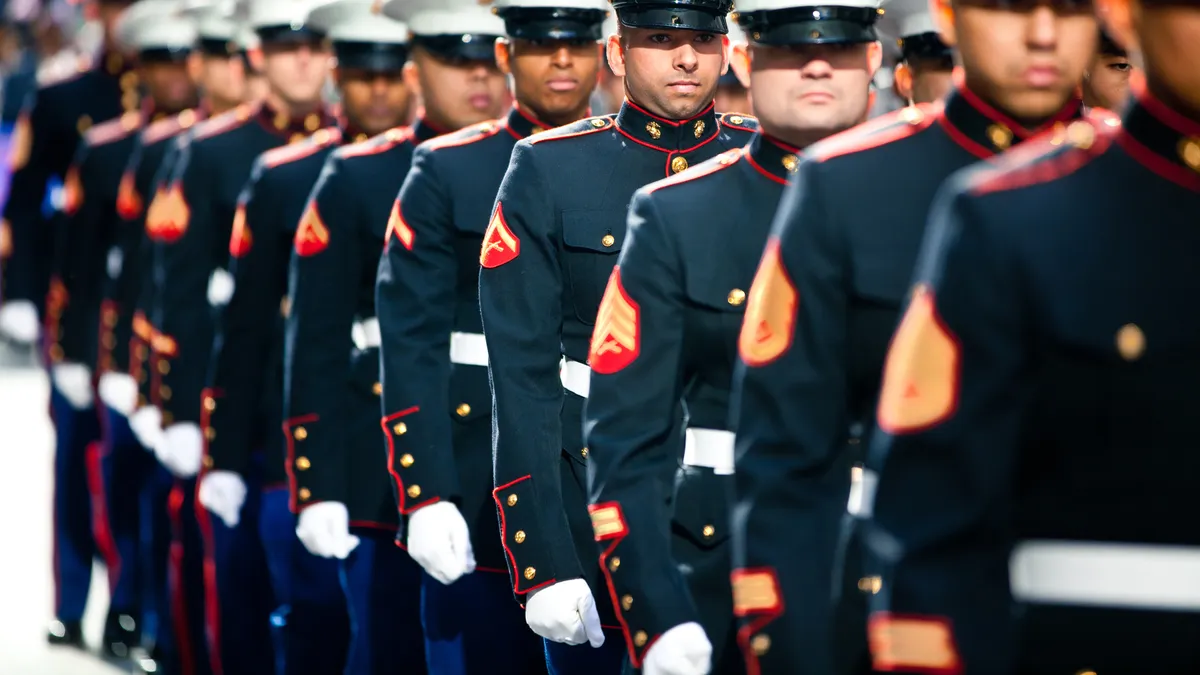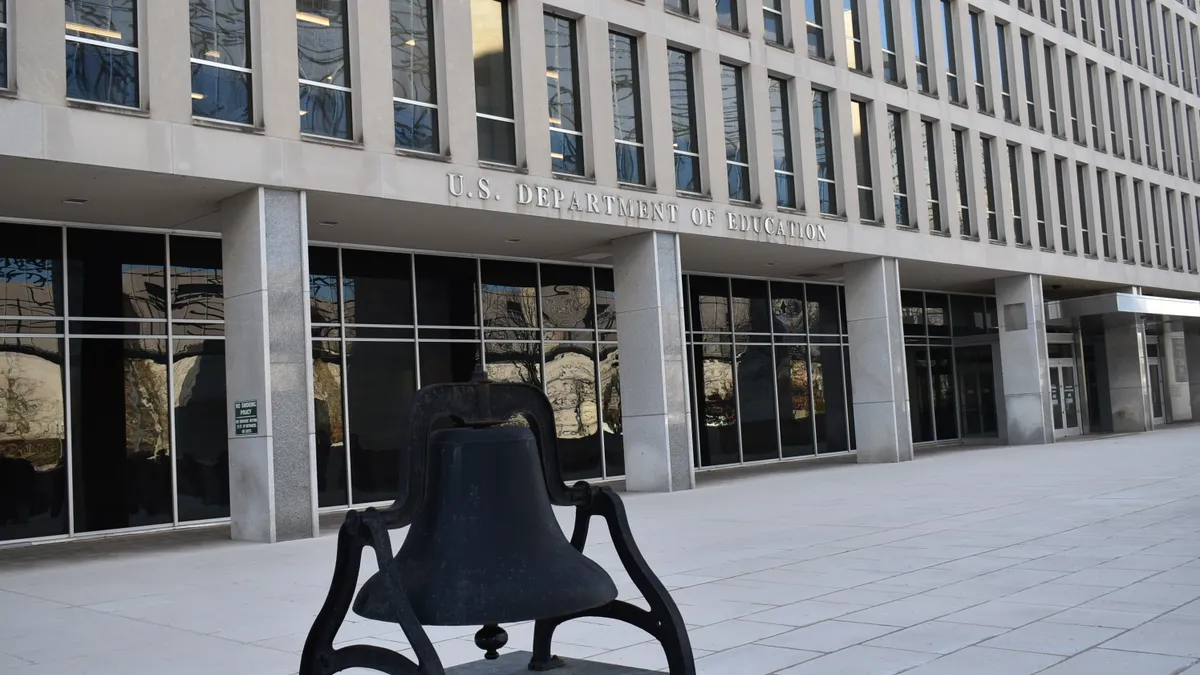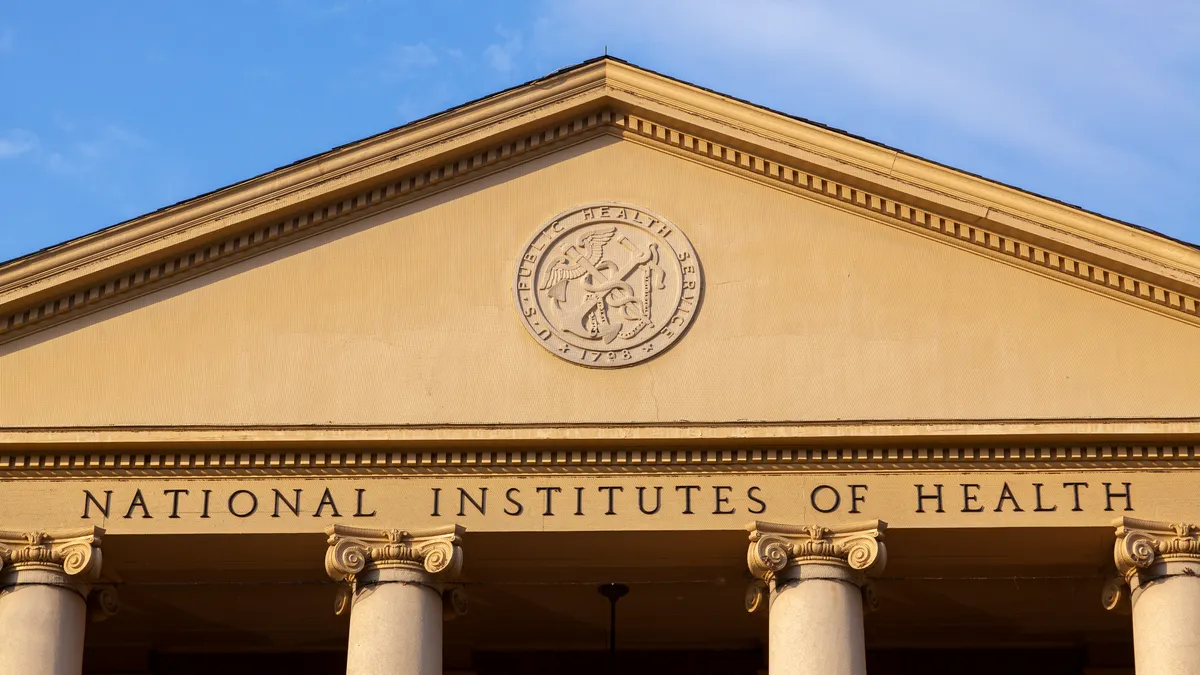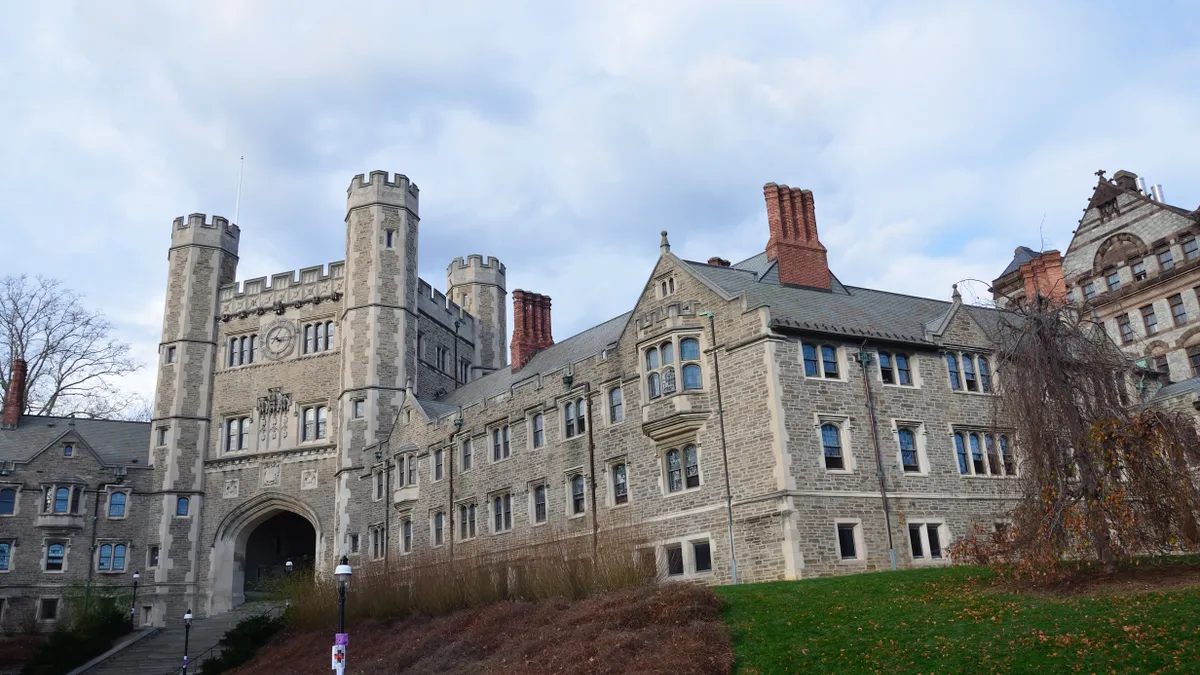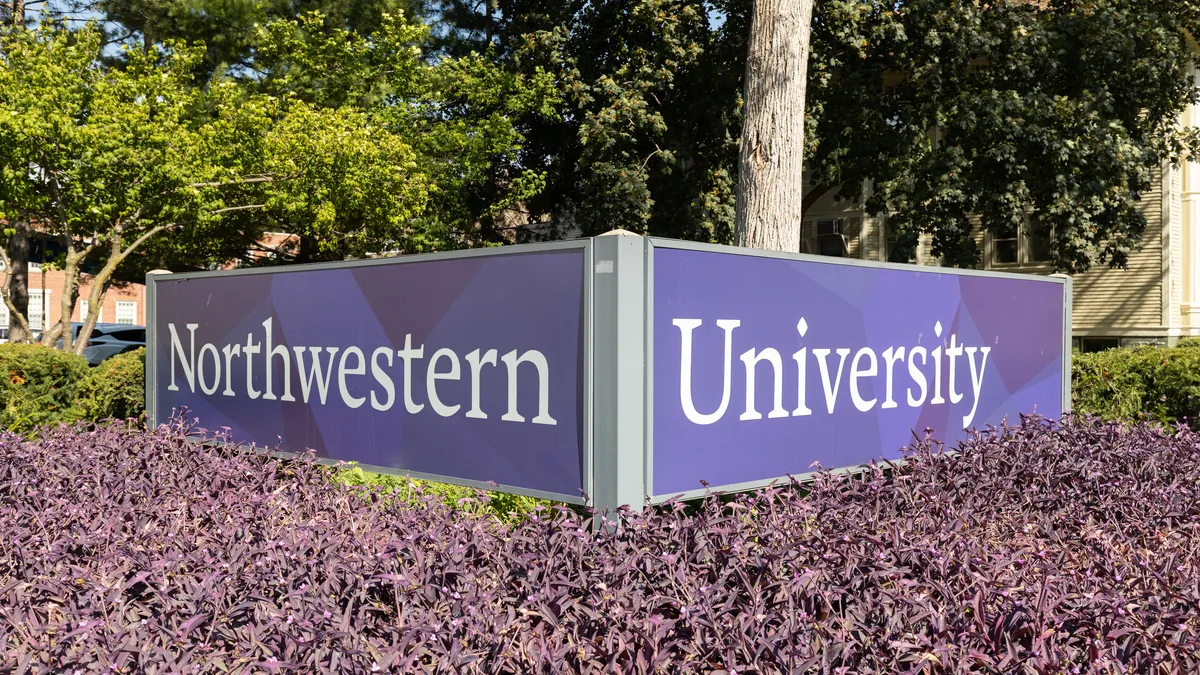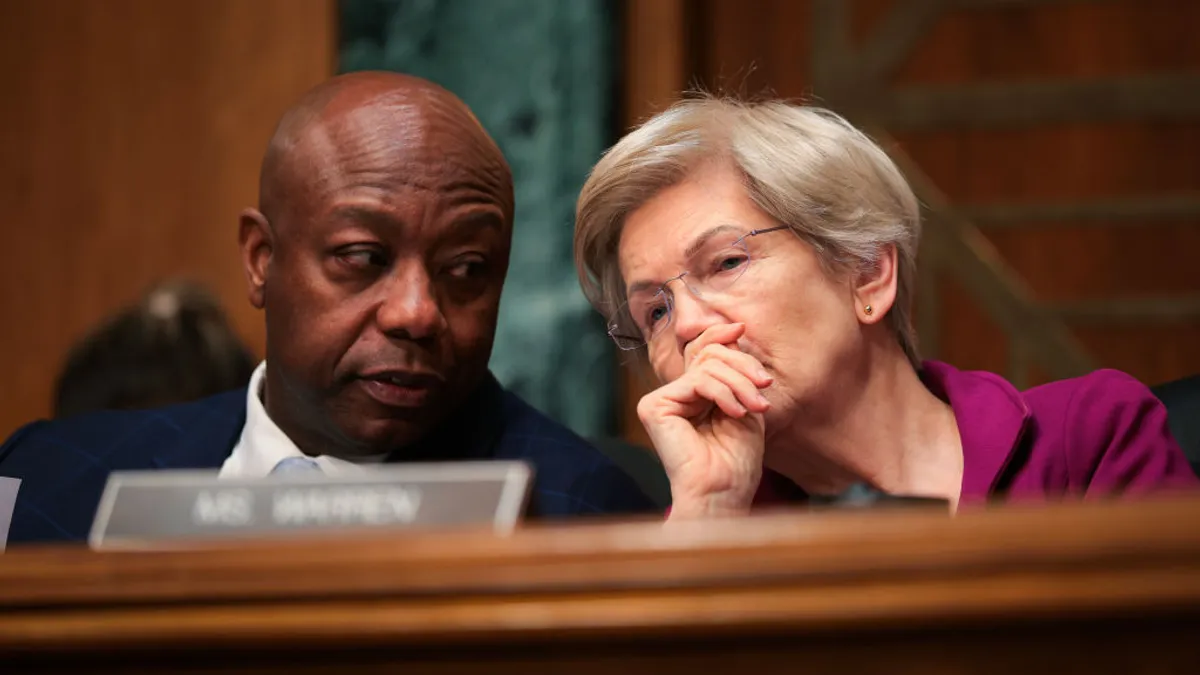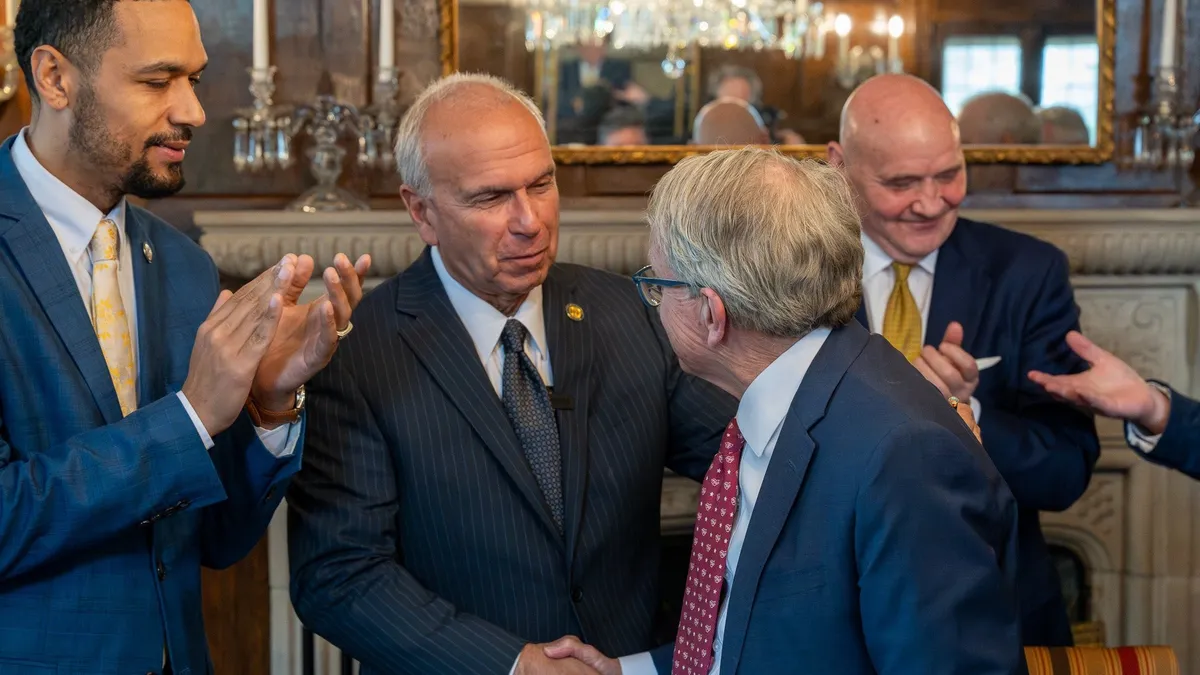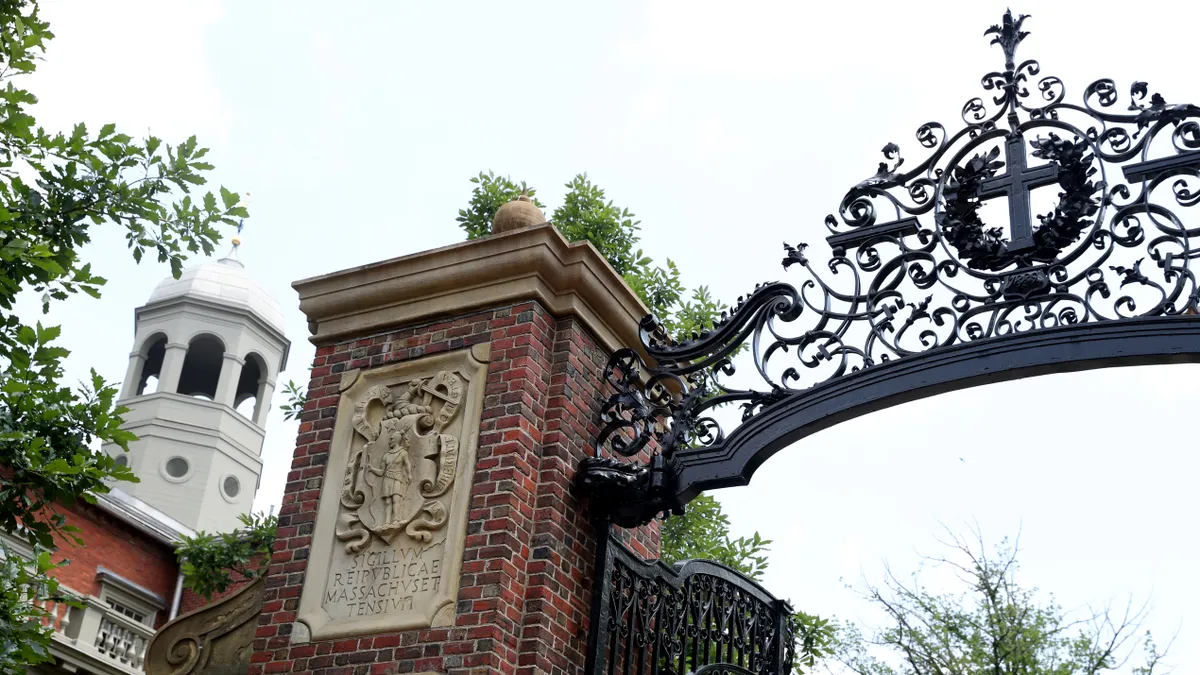Tucked away in Congressional Democrats' coronavirus relief proposal is a measure that would shake up the for-profit college industry.
They're hoping to change the 90/10 rule, which bars for-profit schools from receiving more than 90% of their revenue from Title IV federal student aid.
For-profit colleges self-report to the U.S. Department of Education about whether they meet the rule's requirements. If they fail for two consecutive fiscal years, they lose access to federal student aid for at least the next two years.
Military education benefits such as from the GI Bill don't count toward that calculation, however. In recent years, for-profits have been targeting student veterans for enrollment and receiving an outsized share of GI Bill benefits.
New America, a left-leaning think tank, is one of the groups pressing the Biden administration to count all forms of federal aid in the 90% calculation. Under the current law, for-profits can maintain the required ratio of Title IV aid and other revenue sources by recruiting veterans, said Clare McCann, deputy director for federal higher education policy at New America.
"The important thing when you're looking at any accountability policy is that colleges will try to game the accountability rule," she said.
Democrats' proposal would alter the law to include military education benefits in the 90% calculation, closing the so-called "90-10 loophole." Here, we take a look at the history of the law, its impact on the for-profit sector and the effects of the potential change.
Why was the rule enacted?
In the 1990s, concerns grew that some for-profit colleges were abusing federal financial aid programs by saddling students with debt they couldn't pay off. Annual federal costs for defaulted student loans had ballooned, rising to $3.6 billion in 1991, according to government documents. The next year, the U.S. Department of Education threatened to cut off aid to roughly 1,200 schools with high default rates, most of which were for-profits.
Congress passed a host of laws that year meant to crack down on the sector. Among them was the 85/15 rule — the precursor to today's law — which limited for-profit institutions to receiving only 85% of their revenue from federal aid programs.
The rule was designed to be a proxy for measuring educational value. If a for-profit institution is advertising that its credentials offer a good return on investment, "then students should be willing to put at least some of their own money towards it," said Jon Fansmith, director of government relations at the American Council on Education.
In 1998, lawmakers changed the ratio to 90/10. This law hasn't changed since then, but scrutiny of for-profit colleges mounted during the Obama administration and is likely to pick up again during President Joe Biden's tenure. Moreover, several veterans groups have been vocal advocates of including military education benefits in the calculation, arguing that some for-profit schools are preying on service members in order to access more federal aid.
What is the rule's impact?
Although for-profit groups and some policy experts disagree on whether the rule measures educational value, it does serve at least one intended purpose. "It has worked to the extent that you don't have for-profit institutions that are 100% reliant on Title IV money," said Kevin Kinser, an education professor at Penn State University.
Yet many colleges toe the line. Nearly 200 for-profit colleges received between 85% and 90% of their revenue from federal student aid in the 2017-18 academic year, according to the latest data from the U.S. Department of Education. They include small barber and cosmetology schools as well as larger online colleges. And many draw a sizable share of their revenue from military education benefits.
Chester Career College, in Virginia, gained nearly $202,000 from the GI Bill in the 2017 fiscal year. Title IV funding, meanwhile, accounted for 88.2% of its total revenue of $2.6 million in its fiscal year ending in December 2017, according to Ed Department data. It's one of several for-profits that have come close to crossing the 90% threshold while also receiving tens of thousands or even millions of dollars in military education benefits.
The number of for-profits that fail to meet the ratio each year ranges from a handful to more than a dozen. In the 2017-18 academic year, for instance, 12 institutions weren't in compliance. One closed, but the rest maintained access to federal aid, according to the U.S. Department of Education.
Of that group, six hadn't violated the rule the prior year and five had their consequences waived because they were located in Puerto Rico, which suffered devastating financial losses that year from Hurricane Maria.
Who wants the rule changed?
Congressional Democrats and some veterans groups have been pushing for years to include military education benefits in the 90% calculation.
"Closing the 90/10 loophole is our No. 1 priority and will certainly remain so until it is closed," said Justin Monk, policy associate at Student Veterans of America, which researches and advocates for veterans in higher education. "It is the primary driver, in our estimation, of predatory and abusive practices to student veterans."
Those groups may get their way this week, when Congress is expected to begin voting on a $2 trillion spending bill that includes the change.
Lawmakers are shuttling the bill through using an expedited process known as reconciliation, which would require the proposal to receive a simple majority of votes to pass in the divided Senate, where Democrats have a small but significant edge. Democrats have a small majority in the House.
This process creates an "easier path" for changing the 90/10 rule than did past legislative attempts, Fansmith said. "The opportunity has struck."
Career Education Colleges and Universities, which lobbies on behalf of for-profit schools, is against the proposal. If Congress moves to include military education benefits in the calculation, CECU requests lawmakers also include some way to measure schools' quality — such as through job placement or graduation rates — so for-profits that meet them can waive out of the requirements, said Jason Altmire, the organization's president and CEO.
"The 90/10 rule is not a measure of quality," Altmire said. "There is a lack of understanding among some in Congress over that fact. You can be a very high quality school with high graduation rates (and) job placement, low cohort default rates, and excellent outcomes and student services — and still be in danger of failing the 90/10 rule."
A recent report from the Veterans Education Project makes similar arguments. It highlights seven for-profit schools, which collectively enroll more than 1,100 students who use military education benefits, that it says would fail a modified 90/10 rule even though they have similar or better completion rates and median earnings for graduates as less-selective public institutions.
What would happen if the rule changed?
Nearly all for-profit schools are compliant with the current 90/10 rule. If military education benefits were included in the calculation, however, for-profits enrolling about a quarter of the sector's students would fail the test, according to a 2019 report from The Brookings Institution. Those losses would be heavier at four-year colleges than two-year schools.
Higher education policy experts agree that many for-profits will be able to change their recruiting and enrollment practices to meet the new version of the rule, however.
"Not to say every single school will be able to," McCann said. "It's possible that they can't find enough tuition-paying students quickly enough. But that's kind of the point of the rule, to say, the school should not be overly targeting people who are receiving federal funds."



